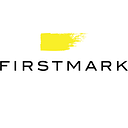Pepsi’s Focus on Designing Emotional Experiences To Impact Business Objectives
Insights from FirstMark’s Design Driven NYC, a monthly event and community that lives at the intersection of design, user experience, and technology. Design Driven highlights the stories behind the most interesting products and designers in the world. See all of our Design Driven talks here.
Pepsi will open this spring a sleek new bar and restaurant in New York’s Meatpacking District dubbed Kola House. Pepsi Chief Design Officer Mauro Porcini calls the effort a “collision between music, programming, fashion, and art.”
It’s about more than cola (or kola, for that matter), it’s about building relationships with customers through experiences. That’s increasingly a focus for Porcini and Pepsi.
Porcini was brought to Pepsi by CEO Indra Nooyi to help transform the organization with design-first thinking. In a talk at FirstMark’s Design Driven NYC, Porcini discussed his approach to driving innovation and brand through designing experiences, which Pepsi has done well through activations at events like the Super Bowl, South By Southwest, and Coachella. He laid out three types of interactions that everyone can relate to and all brands should strive toward: Visceral, Interactive, and Expressive. He said it’s important to understand that disparate business units can approach these interactions with different perspectives, while still working toward the same goal.
Visceral: To achieve the business goal of driving customers to purchase, the design goal is to wow the customer. This applies to emotional or impulsive purchases. It’s the scenario where a customer goes to the store with a list and leaves with items they didn’t plan for.
Porcini said Pepsi achieved this with the release of Pepsi Perfect, a campaign that brought to life the futuristic imagery created in the film “Back to the Future II.” Fans had such a visceral reaction to the commemorative bottles that they were being sold online for as much as $500 just hours after their release.
Interactive: The business goal is to entice a customer to repurchase, while the design goal is to motivate engagement between the brand and customer. The presence of emotional satisfaction and loyalty propel this step, which is demonstrated by those customers who line up outside an Apple store to make a purchase before they ever see the product. There’s trust in the brand.
Porcini pointed to the Pepsi Spire as a recent example of driving engagement. Spire can pour up to 3 flavor shots, simultaneously, with any featured beverage, giving consumers thousands of choices in creating their own custom drink. In this example, engagement is completely explicit; there’s no more interactive way for a customer to experience a brand than to design their own beverage, building affinity and loyalty.
Expressive: Finally, you want customers to communicate positively about your brand. Harnessing that spontaneous, word-of-mouth PR is key. The business goal is to motivate customers to recommend your product, which motivates designers to create a feeling of pride with the experience.
Kola House is great example of this type of interaction. Patrons are surrounded by tasteful Pepsi-inspired designs while they sip Pepsi-themed cocktails, creating a buzzworthy experience they want tell friends about.
Of course, the end goal is to sell Pepsi. However, the path to purchase consists of much more than sales tactics.
“Every time we design our products, our touchpoints for the brand, this is what we always search to create — the wow effect, emotional/rational engagement, and finally the pride of being associated with a brand and product,” Porcini said. “This must happen in a consistent, seamless, authentic way across every touchpoint of the brand.”
To hear more from Porcini’s talk, “Design Thinking to Drive Innovation and Brand Building,” check out the full video above from FirstMark’s Design Driven NYC.
